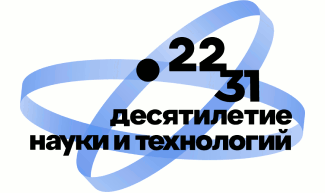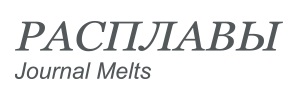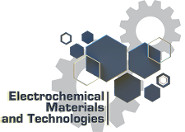Currently research and development of the Institute of High Temperature Electrochemistry is published both by the peer-reviewed journals and by the scientific, technical and medical publishers worldwide.
In summer 2019 NOVA publisher produced two books An Essential Guide to Electrical Conductivity edited by Luke Lewin and An Introduction to Molecular Dynamics edited by Mark S. Kemp.
 «An Essential Guide to Electrical Conductivity and Resistivity» opens with the chapter authored by Pavel Arkhipov «Electrical Conductivity of Molten Mixtures of Lead Chloride and Lead Oxide Containing Potassium and Cesium Chlorides», which presents experimental and theoretical data on the important structurally sensitive property of the molten oxide-chloride systems КCl (50 mol. %)–PbCl2 (50 mol. %), CsCl (18.3 mol. %)–PbCl2 (81.7 mol. %) and CsCl (71.3 mol. %)–PbCl2 (28.7 mol. %) with PbO concentration reaching 20 mol.% in the temperature range of 764 – 917 K.
«An Essential Guide to Electrical Conductivity and Resistivity» opens with the chapter authored by Pavel Arkhipov «Electrical Conductivity of Molten Mixtures of Lead Chloride and Lead Oxide Containing Potassium and Cesium Chlorides», which presents experimental and theoretical data on the important structurally sensitive property of the molten oxide-chloride systems КCl (50 mol. %)–PbCl2 (50 mol. %), CsCl (18.3 mol. %)–PbCl2 (81.7 mol. %) and CsCl (71.3 mol. %)–PbCl2 (28.7 mol. %) with PbO concentration reaching 20 mol.% in the temperature range of 764 – 917 K.
https://novapublishers.com/shop/an-essential-guide-to-electrical-conductivity-and-resistivity/
In the opening chapter of «An Introduction to Molecular Dynamics» authored by Alexander Galashev «Application of the Method of Statistical Geometry in Molecular Dynamic Calculations» the method of statistical geometry,  based on the construction of a Voronoi polyhedral, is applied to the pattern recognition of atomic environments and to the investigation of the local order in molecular dynamics-simulated materials.
based on the construction of a Voronoi polyhedral, is applied to the pattern recognition of atomic environments and to the investigation of the local order in molecular dynamics-simulated materials.
 In closing of the book «An Introduction to Molecular Dynamics» – Non-Constant Force Field Molecular Dynamics, the author, Anton Raskovalov, discusses the methodology of molecular dynamics simulation with a non-constant force field. In the context of molecular simulations, the term “force field” refers to a set of equations and parameters for the calculation of forces acting on the particles of the system and its potential energy.
In closing of the book «An Introduction to Molecular Dynamics» – Non-Constant Force Field Molecular Dynamics, the author, Anton Raskovalov, discusses the methodology of molecular dynamics simulation with a non-constant force field. In the context of molecular simulations, the term “force field” refers to a set of equations and parameters for the calculation of forces acting on the particles of the system and its potential energy.
https://novapublishers.com/shop/an-introduction-to-molecular-dynamics/
At the turn of 2018 NOVA published the book by Alexander Y. Galashev and Yuri P. Zaikov «Properties and Application of Ultrathin Carbon and Silicon Films». This book is devoted to the computer modeling of two-dimensional materials consisting of no more than two sheets of graphene or silicene. The results of the investigation of the mechanical and thermal properties of such ultrathin films that are in a free-standing state and, also, located on substrates of silver, copper, and graphite are presented. The thermal stability of copper, nickel, and aluminum films of monatomic thickness on graphene has been studied. The calculated data on the temperature dependence of the thermal conductivity of single-layer graphene and silicene are presented. The excellent adsorption properties of graphene allow one to use it as a filter.
 A method for purifying graphene from heavy metals (copper, lead, and mercury) is proposed and implemented in a computer experiment by bombarding a contaminated graphene film on a copper substrate by clusters of noble gases with energies from 5 to 30 eV at various angles of incidence. This method of purifying graphene from mercury is compared with the method of heating this toxic metal deposited on graphene.
A method for purifying graphene from heavy metals (copper, lead, and mercury) is proposed and implemented in a computer experiment by bombarding a contaminated graphene film on a copper substrate by clusters of noble gases with energies from 5 to 30 eV at various angles of incidence. This method of purifying graphene from mercury is compared with the method of heating this toxic metal deposited on graphene.
The book is aimed at creating new composite materials with the use of graphene and silicene. Considerable attention is paid to the creation of high-capacity, rapidly cyclic, long-lived anodes of ionic batteries. Graphene and silicene can be used as anode materials of lithium-ion batteries, while their charge capacity sharply increase and the charging time is shortened. Here, the authors describe the results of the passage of lithium ions through graphene and silicene membranes. Vacancy defects form the holes in these membranes. Further development of electrochemical current sources is constrained due to the lack of suitable anode material. Graphene, and especially silicene, are the main materials for designing the anode of a lithium-ion battery. This book describes computer experiments involving the passage by lithium ions through the graphene, silicene, and silicene-graphene channels formed by corresponding perfect sheets and sheets containing vacancy defects.
The processes of intercalation and deintercalation of lithium into silicene channels of various degrees of defectiveness located on a silver and copper substrate are considered. The lithium ion moving in the electric field along the channel is considered as a probe for determining the detailed structure of the channel. This approach allows us to investigate the surrounding of the ion by both Si-rings and Si-polyhedra. The prospect of using silicene on pyrolytic graphite as an anode material is examined. Computer tests are supported by the calculation of the energy, kinetic and mechanical characteristics of the functional elements of the anode. In each case, all components of the stress tensor of a two-dimensional material are determined. This book will be useful for scientists, graduate students, and students who are interested in the actual use of unique two-dimensional materials in the form of graphene and silicene. This book may interest technologists engaged in the field of electronics and the creation of electrochemical current sources, materials scientists, researchers using low-energy cluster beams, and specialists in the field of computer modeling. This work was supported by the Russian Science Foundation [the grant number 16-13-00061].
https://novapublishers.com/shop/properties-and-application-of-ultrathin-carbon-and-silicon-films/
 In May 2018 the publishing house IntechOpen pushed in the open access the book «Uranium: Safety, Resources, Separation, and Thermodynamic Calculation» edited by Nasser Awwad. The chapter entitled «Thermodynamics and Separation Factor of Uranium from Fission Products in “Liquid Metal-Molten Salt” System» and authored by Valeri Smolenski, Alena Novoselova, Alexander Bychkov, Vladimir Volkovich, Yana Luk’yanova and Alexander Osipenko contains the results of studying electrochemical and thermodynamic properties of La, Nd, and U in “liquid metal-molten salt” systems, where liquid metals were binary Ga-Al and Ga-In alloys of various compositions. The apparent standard potentials of ternary U-Ga-In, U-Ga-Al, La-Ga-In, La-Ga-Al, Nd-Ga-In, and Nd-Ga-Al alloys at various temperatures were determined, and the temperature dependencies were obtained. Primary thermodynamic properties (activity coefficients, partial excess Gibbs free energy change, partial enthalpy change of mixing, and excess entropy change) were calculated. The influence of the bimetallic alloy composition and the nature of lanthanide on thermodynamic properties of compounds are discussed. The values of U/Nd separation factors on gallium-aluminum and U/La on gallium-indium alloys were calculated. The value of the separation factors strongly depends on the alloy composition. Uranium in this case is accumulating in the metallic phase and lanthanides in the salt melt. Analysis of the data obtained showed the perspective use of the active cathodes (Ga-Al and Ga-In instead of single Cd) in future innovative methods for reprocessing spent nuclear fuels (SNF) and high-active nuclear wastes in the future of closed nuclear fuel cycle.
In May 2018 the publishing house IntechOpen pushed in the open access the book «Uranium: Safety, Resources, Separation, and Thermodynamic Calculation» edited by Nasser Awwad. The chapter entitled «Thermodynamics and Separation Factor of Uranium from Fission Products in “Liquid Metal-Molten Salt” System» and authored by Valeri Smolenski, Alena Novoselova, Alexander Bychkov, Vladimir Volkovich, Yana Luk’yanova and Alexander Osipenko contains the results of studying electrochemical and thermodynamic properties of La, Nd, and U in “liquid metal-molten salt” systems, where liquid metals were binary Ga-Al and Ga-In alloys of various compositions. The apparent standard potentials of ternary U-Ga-In, U-Ga-Al, La-Ga-In, La-Ga-Al, Nd-Ga-In, and Nd-Ga-Al alloys at various temperatures were determined, and the temperature dependencies were obtained. Primary thermodynamic properties (activity coefficients, partial excess Gibbs free energy change, partial enthalpy change of mixing, and excess entropy change) were calculated. The influence of the bimetallic alloy composition and the nature of lanthanide on thermodynamic properties of compounds are discussed. The values of U/Nd separation factors on gallium-aluminum and U/La on gallium-indium alloys were calculated. The value of the separation factors strongly depends on the alloy composition. Uranium in this case is accumulating in the metallic phase and lanthanides in the salt melt. Analysis of the data obtained showed the perspective use of the active cathodes (Ga-Al and Ga-In instead of single Cd) in future innovative methods for reprocessing spent nuclear fuels (SNF) and high-active nuclear wastes in the future of closed nuclear fuel cycle.
https://www.intechopen.com/books/uranium-safety-resources-separation-and-thermodynamic-calculation/thermodynamics-and-separation-factor-of-uranium-from-fission-products-in-liquid-metal-molten-salt-sy
In 2011 and 2012 IntechOpen pushed in the open access the books «Mass Transfer – Advanced Aspects» edited by Hironori Nakajima и «Recent Trend in Electrochemical Science and Technology» edited by Ujjal Kumar Sur.
In the book «Mass Transfer – Advanced Aspects»  the chapter «Electrochemistry of Tm(III) and Yb(III) in Molten Salts» authored by Alena Novoselova, Valeri Smolenski, Alexander Osipenko and Michael Kormilitsyn is devoted to determination of the electrochemical and thermodynamic properties of some fission products (Tm and Yb), their mass transfer, and behavior in different fused solvents using transient electrochemical techniques, and potentiometric method (emf).
the chapter «Electrochemistry of Tm(III) and Yb(III) in Molten Salts» authored by Alena Novoselova, Valeri Smolenski, Alexander Osipenko and Michael Kormilitsyn is devoted to determination of the electrochemical and thermodynamic properties of some fission products (Tm and Yb), their mass transfer, and behavior in different fused solvents using transient electrochemical techniques, and potentiometric method (emf).
https://www.intechopen.com/books/mass-transfer-advanced-aspects/electrochemistry-of-tm-iii-and-yb-iii-in-molten-salts




